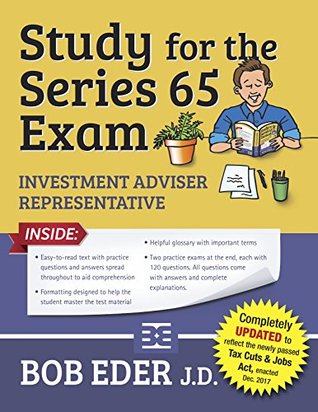Kindle Notes & Highlights
INTERNAL RATE OF RETURN (IRR) Thisisthe true rate of return on an investment. It considers compounding of money and compares the expected retur...
This highlight has been truncated due to consecutive passage length restrictions.
When analyzing bonds, another name for IRR is “yie...
This highlight has been truncated due to consecutive passage length restrictions.
Beta This is a word representing the letter “B” in Greek that measures both volatility of a stock in relation to the whole market.
EXAMPLE
Beta Reflects Vol...
This highlight has been truncated due to consecutive passage length restrictions.
The “mode” is the number that occurs the most often.
The higher the standard deviation of a stock's return, the higher its risk, the lower its Sharpe Ratio.
Price to Book Ratio The ratio of the current common stock price to the amount of “common equity” or book value. Book value means total shareholders equity minus intangibles.
Ideally, the growth percentage of EPS should equal or exceed...
This highlight has been truncated due to consecutive passage length restrictions.
Specific Risk The stock price of a particular company may fall, even though at the same time the market as a whole may rise in value.
Systematic Risk This is the risk that the whole market will crash. This is also called “market risk.”
Interest Rate Risk The risk that interest rates will go up and cause bond prices to go down. If interest rates go up, the prices of bonds will go down. This happens because a bond that pays 4 percent will lose value if other bonds pay a higher rate, say, 5 percent. A change in interest rates also affects stock prices. If rates go up, investors tend to pull money out of stocks to invest in bonds which yield higher returns.
Purchasing Power Risk Also called “inflation risk,” purchasing power risk is the uncertainty regarding the future purchasing power of invested dollars.
The use of constant dollars gives a truer picture of changes in purchasing power fr...
This highlight has been truncated due to consecutive passage length restrictions.
“Unsystematic” means a specific risk that affects only specific stocks, specific bonds, or specific industries, and not the whole market.
The risk that the price of a specific stock will decline is called “specific risk.” Another name for specific risk is “unsystematic risk.”
Financial Risk This risk involves safety of principal. Will my client, Grandma Richards, lose all of her money on the junk bond portfolio that I recommended? Management Risk This is the risk of the uncertainty of the quality and ability of management overseeing the investment.
Marketability Risk
Liquidity Risk Thisisthe risk that a client will not have the ability to convert an invested asset into cash at the time that he/she needs it the most.
Corporate Bonds Corporate bonds have a greater degree of financial risk than government bonds, and therefore carry a higher interest rate to compensate.
Internal Revenue Service The IRS always has a priority lien on assets in bankruptcy. This means that IRS will take its due before any unsecured bondholder or creditor.
Bonds and Creditors
Secured bonds, secured notes, mortgages, secured creditors— these are...
This highlight has been truncated due to consecutive passage length restrictions.
Outstanding Stock This is issued stock that is in the hands of investors and which the corporation has not repurchased. “Outstanding shares” are equal to issued shares minus treasury shares.
To find an approximate rate of return after inflation, subtract the inflation rate from the stated rate on the bonds.
Moreover, alpha is adjusted for the risk or volatility of the investment or fund.
Total Return This return takes into account not only dividends and/or interest to be received, but also any capital appreciation on the investment.
Finally, to obtain the TWR for the year, connect these returns for the three sub-periods by multiplying them.
DWR is equivalent to calculating an internal rate of return (IRR) on an investment. It is like calculating yield to maturity on a bond, because DWR reduces future gains and losses to present ...
This highlight has been truncated due to consecutive passage length restrictions.
Internal Rate of Return (IRR) Thisis a true rate of return on an investment. It takesinto account cash flows anticipated to be received from the investment in the future. IRR discounts these cash flows back to the present. Then, IRR compares their present value to the original cost of the investment. The resulting yield, or rate of return, is the internal rate of return, or IRR.
MONEY MARKET The “money market” is the market for short-term debt securities. “Short term” means one year or less.
Money market instruments include T-bills, CD’s, and commercial paper.
T-Bill Maturities Up To One Year Treasury bills are issued in short-term maturities of 4, 13, 26, and 52-week maturities. The...
This highlight has been truncated due to consecutive passage length restrictions.
The difference between what Henry pays and what he receives is all interest income. It is...
This highlight has been truncated due to consecutive passage length restrictions.
A jumbo CD is considered to be $100,000 or more in face value.
Commercial Paper Commercial paper is short-term debt issued by corporations with maturities not exceeding 270 days.
CAPITAL MARKET This is the market for bonds and other long- term debt securities. A bank’s capital market desk would not trade short-term debt securities, such as T-bills, commercial paper, or CD’s.


